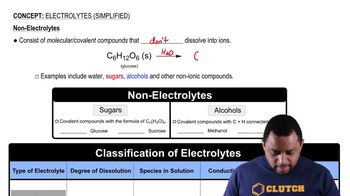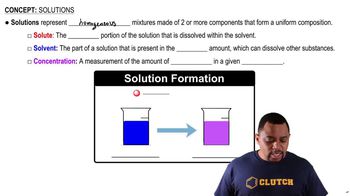Classify the solute represented in each of the following equations as a strong, weak, or nonelectrolyte:
a.
 Verified step by step guidance
Verified step by step guidance Verified video answer for a similar problem:
Verified video answer for a similar problem:



 2:38m
2:38mMaster Electrolytes (Simplified) Concept 1 with a bite sized video explanation from Jules
Start learning